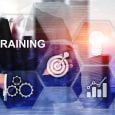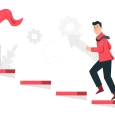
The Advanced Placement United States History (APUSH) course is a challenging academic experience that requires students to develop and utilize advanced historical thinking skills. These skills are essential for success on the APUSH exam and in college-level history courses. In this guide, we will explore the fundamental historical thinking skills required for success in APUSH and offer tips for mastering them.
Section 1: Analyzing Historical Sources
One of the primary skills required for success in APUSH is the ability to analyze historical sources critically. This includes primary sources like letters, diaries, and government documents, as well as secondary sources like textbooks and scholarly articles. To analyze these sources effectively, students must:
- Identify the author and their perspective: Understanding who wrote a particular source and why is essential for analyzing its content critically.
- Assess the reliability of the source: Students must evaluate the reliability of the source by considering the author’s bias, the context in which it was written, and the intended audience.
- Evaluate the significance of the source: Students must determine the source’s significance in the broader historical context and its impact on historical events.
Section 2: Interpreting Historical Evidence
Interpreting historical evidence requires students to make sense of the information they have gathered through their analysis of historical sources. To interpret historical evidence effectively, students must:
- Analyze patterns and trends: Students must identify patterns and trends in historical data to make sense of complex events and ideas.
- Evaluate cause and effect: Students must understand the causal relationships between events to interpret the historical significance of those events.
- Synthesize information: Students must synthesize the information they have gathered from multiple sources to form a coherent understanding of historical events and ideas.
Section 3: Evaluating Historical Arguments
Evaluating historical arguments requires students to assess the validity of historical claims made by authors and historians. To evaluate historical arguments effectively, students must:
- Identify the thesis and supporting evidence: Students must understand the author’s argument and evaluate the evidence used to support it.
- Evaluate counterarguments: Students must consider alternative perspectives and evaluate the evidence used to support them.
- Assess the historical significance: Students must evaluate the historical significance of the argument and its impact on the broader historical context.
Section 4: Applying Historical Thinking Skills
Once students have developed the fundamental historical thinking skills required for success in APUSH, they must learn to apply those skills effectively. To apply historical thinking skills effectively, students must:
- Practice writing analytical essays: Students must practice writing essays that demonstrate their ability to analyze, interpret, and evaluate historical sources.
- Engage in classroom discussions: Students must actively participate in classroom discussions and debates to develop their critical thinking and communication skills.
- Seek feedback and guidance: Students must seek feedback and guidance from teachers and peers to identify areas where they need to improve and develop their historical thinking skills further.
Conclusion:
Mastering APUSH Historical Thinking Skills requires students to develop and utilize critical thinking skills that enable them to analyze, interpret, and evaluate historical sources and arguments effectively. By practicing these skills regularly and seeking feedback and guidance from teachers and peers, students can improve their performance in APUSH and become more successful in college-level history courses.




